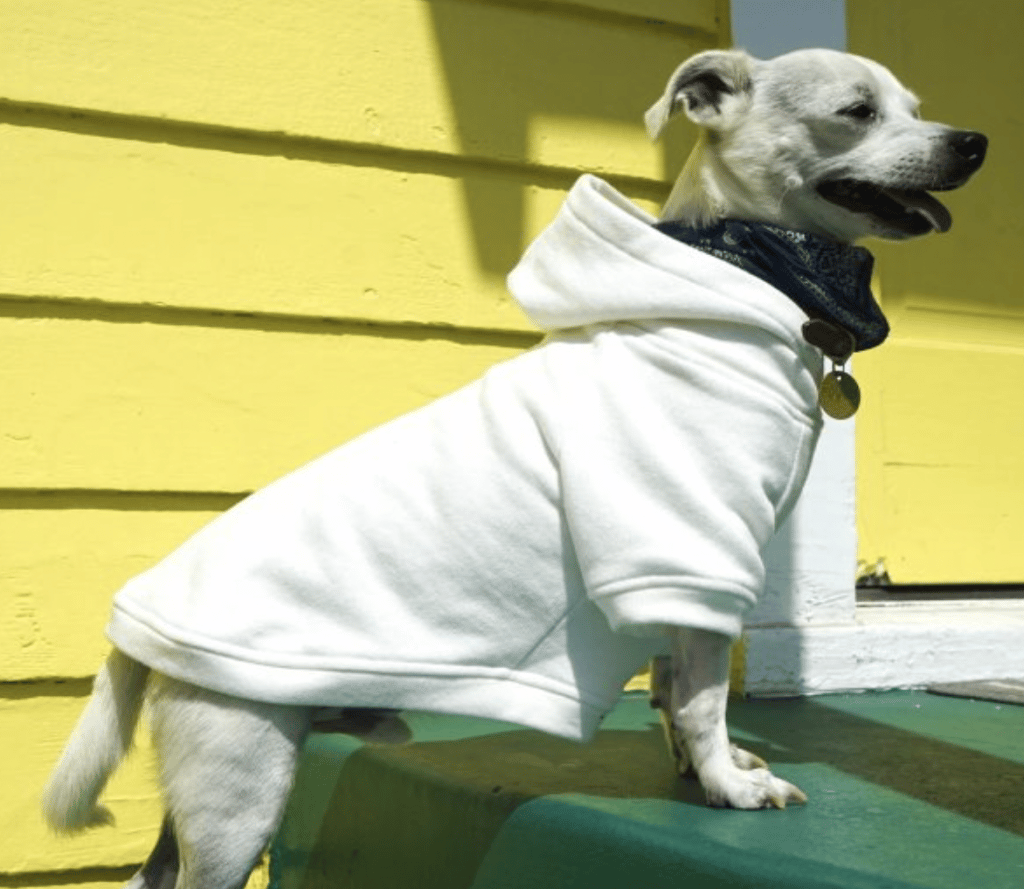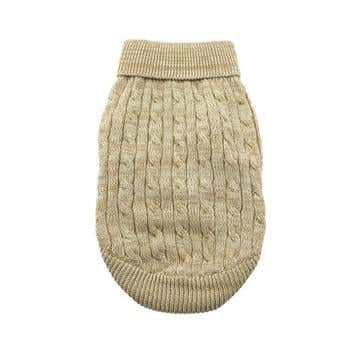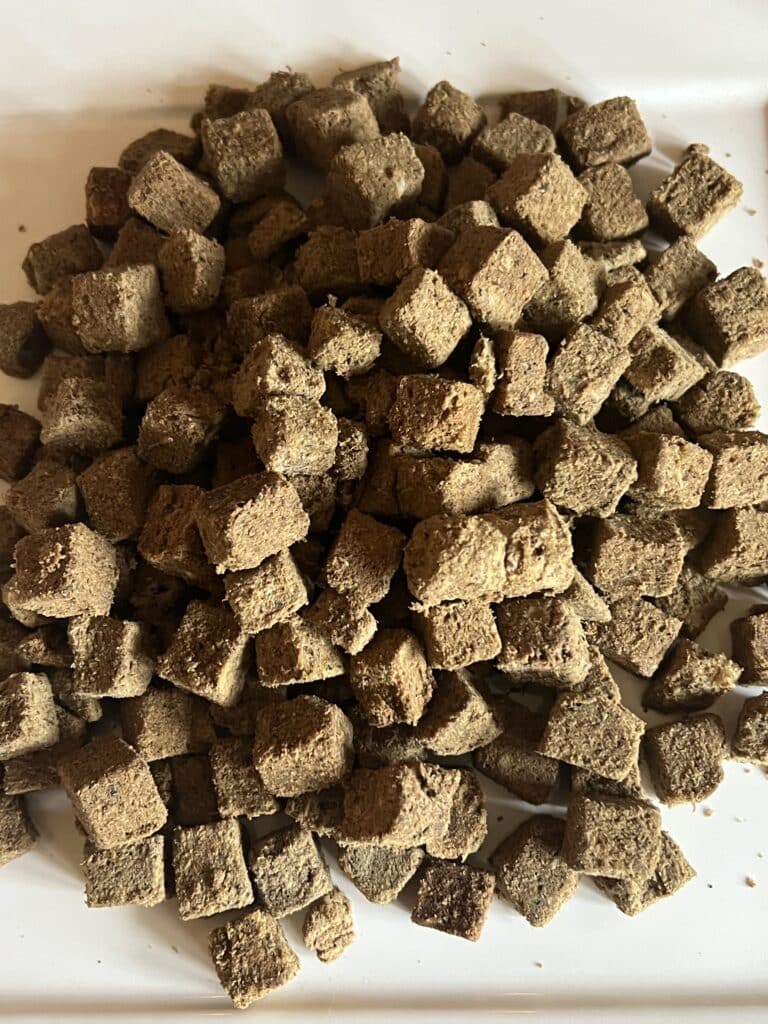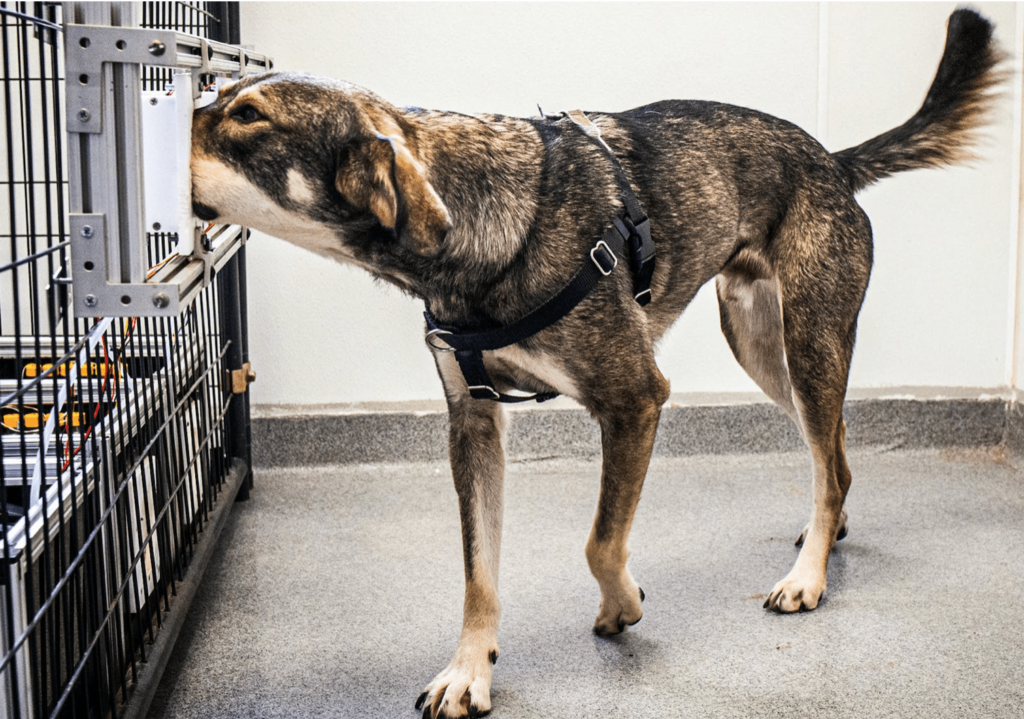Playing a game of ball or taking a sunset stroll with your best friend—these are some of the best parts about life with a dog. But what happens when arthritis starts cramping your canine companion’s style, making such routine activities difficult, if not impossible?
Studies show that arthritis in dogs can appear as early as one year of age. In senior dogs over the age of eight, around eighty percent will find that fetching a toy, jumping up for some cuddle time, or even going for their usual walk can be hampered by pain.
Dogs are pretty stoic—even if they could tell us that their joints were stiff or swollen, they probably wouldn’t—but you can still keep an eye out for signs that arthritis could be affecting their quality and enjoyment of life. For instance, they may seem reluctant to engage in their usual activities, spend more time licking paws or limbs, be more reactive to stress stimuli, or even bite or mouth you when you reach for a pat.
In the face of your pup’s suffering, it’s easy to feel powerless, like there’s nothing you can do. Fortunately, scientists and veterinarians are increasingly recognizing what causes canine arthritis, and how a holistic approach to lifestyle and treatment can reduce their pain and increase their ability to be active for years to come.

Don’t be fooled. While arthritis is more common in older dogs, there are early warning signs. A holistic approach is a preventive approach. Start early!
Photo by Andrew Schultz on Unsplash
Start early
Working with your vet, your main goal should be to decelerate the rate at which your dog develops arthritis. With the right diet and exercise, you can begin to address the risk factors of arthritis in your dog from puppyhood.
Daily exercise is a core component of a dog’s mental and physical wellbeing (and of ours too)—maintaining heart and muscle health, reducing anxiety and stress, and providing a chance to commune with nature. But you may not be aware that too much exercise, especially as puppies, can be detrimental to your canine companion’s health. Indeed, osteoarthritis is more likely in dogs who are over-exercised than under-exercised—and the worst offender is taking your puppy for too long a walk, particularly on concrete. It is far better to exercise your new pup through play interspersed with rest—I advocate for a ratio of five minutes of exercise per month of age (up to twice a day) until the puppy is full grown.
Paying attention to your dog’s diet right from the start will also be helpful in preventing future battles with arthritis. Feeding your new pup inappropriate levels of calcium and calories can cause accelerated and abnormal growth, especially over the first eight months, and contribute to hip dysplasia. Too much calcium also increases the risk of osteoarthritis.
Choosing the right diet for your companion when they’re just a puppy is a good beginning—but for optimal health and nutrition, your dog’s diet is something you’ll need to continue to focus on for the rest of their lives.

Nutrition is at the heart of treating arthritis.
Due to a mix of body structure and genetics, some breeds—especially large dogs such as Labradors, Golden Retrievers, German Shepherds, Rottweilers and Boxers—are more prone to canine osteoarthritis than others. However, what we better understand now is the role of epigenetics, or how behavior and environment cause changes that affect the genes and, consequently, impact the life of your pup.
Just like us, our dog friends are what they eat. For that reason, I am definitely an advocate of nutrigenomics for pets, which means feeding them delicious, whole food that will provide the optimum nutritional environment and give them the best chance of good health.
We humans would be unlikely to thrive on a fast-food diet loaded with chemicals and additives, and so it is with dogs. Many dried and canned foods are also too low in protein and can be inflammatory.
The secret is not just to keep the diet natural, but also to get the nutrient mix right. That means at least thirty percent protein and no more than twenty percent carbohydrate of dry matter, alongside the right balance of omega 3 and 6 (an omega 6 to 3 ratio of no more than five to one), and plenty of antioxidants.
While you can ask your pet food company how your dog’s food stacks up, it might be back to the kitchen for those who want to keep their animal companion in tip-top shape, although some smaller companies do now offer fresh, healthy food delivery.
What should the ingredients be? Grass-fed meats, small oily fish (sardines, mackerel), leafy green vegetables, eggs, complex carbohydrates like broccoli and Asian greens, and bioactive superfoods (spirulina, kelp, moringa, nettles). Vegetables contain a range of phytochemicals that can reduce oxidative stress that contributes to joint deterioration, so it’s great to encourage your dog to eat them.
Getting the digestion right to reduce inflammation should also be a major goal. Good prebiotic sources include pumpkin, chicory and reishi mushroom, as well as bones. (Bones provide collagen, minerals, chondroitin, and prebiotics, too—but talk to your vet about whether they’re safe for your dog.)
Serve up your pup’s chow raw, or lightly cooked, as high heat damages the essential omegas and creates AGEs (advanced glycation end products) that can cause inflammation. (There can be risks and benefits associated with a raw diet, so be sure to discuss it with a nutrition-informed veterinarian before implementing it.)
For those who have the budget, supplementing with nutrients such as green-lipped mussel, chondroitin and glucosamine for the first year of growing can reduce arthritis risk. You can add these supplements back later in life, at the age of around six for small dogs and four for large dogs. If your animal companion is a high-risk breed, consider continuous supplementation throughout their lives.
While some of the ingredients mentioned sound exotic, you’ll be able to source them at good natural pet health stores or sites and get advice about ratios.

Dogs have a way of letting us know they’re in pain.
Photo by Pavel Anoshin on Unsplash
Treat pain first
Watching your best friend struggle to do things they normally enjoy can be heart-breaking. For a dog who is suffering from arthritis, getting pain under control early is critical.
A balanced approach to pain relief may involve pharmaceutical medications, particularly in the acute phase. But one should always look to move toward something that is safer and more effective at improving joint health.
Early on, your vet may suggest non-steroidal anti-inflammatories or, for dogs with an autoimmune disease such as rheumatoid arthritis, immune modulating drugs.
From there, strategically using herbs and nutrients together can help reduce inflammatory chemicals called cytokines that can damage joints. Western and herbal medicines, plus nutrients, probiotics, prebiotics and, for some dogs, medicinal cannabis can be part of a treatment plan.
Some dogs may also need surgery, but if pain can be controlled adequately in the immediate term, you should explore all medical/physical therapy options first.

Photo by Alexandre Debiève on Unsplash
Physical therapies for arthritis relief
Once your pup’s pain is under control, it’s time to try some hands-on helpers like acupuncture, cold laser therapy, therapeutic ultrasound, myofascial release, osteopathy, cranial sacral therapy, and Bowen therapy to help put the comfort back in your companion’s routine.
Many dogs love acupuncture, especially when used in conjunction with massage, and can even fall asleep during a session. At home, you may like some high-tech help for your dog, like a PEMF (Pulse Electro Magnetic Field therapy) tool to help lower inflammation and swelling.
Your vet should also empower you to do massage for your dog, as well as strength-conditioning exercises such as puppy squats and cavalettis, and other types of appropriate physical rehabilitation. Underwater treadmill therapy has been shown in some studies to have the same effects as anti-inflammatory drugs and can help especially with overweight patients.
It’s also important to regulate your dog’s environment. Avoid encounters with aggressive dogs or people and stay away from places that are likely to trigger stress. Provide your dog with a comfortable and supportive bed and consider things like therapeutic booties to give them more traction on slippery surfaces and ramps to get them into the car.
To help your best friend live a happier life with less joint pain, you can start by making even small changes today. Canine arthritis that has progressed to a more serious stage can often be treated, so it’s important to be committed and stay positive.
With a comprehensive health plan and the support of a good veterinarian, you and your dog can still have a bright and active future together, full of carefree frolics in the park.
This article does not take the place of professional or medical advice. Always see your veterinarian to diagnose and treat health conditions in your dog. The author and Love, Dog do not accept any liability for any injury, loss or damage caused by use of the information provided.
subscription
LOVE, DOG












